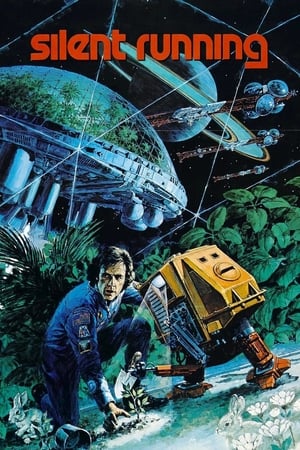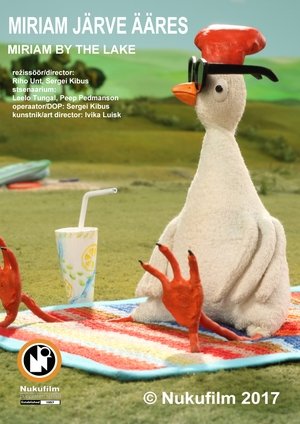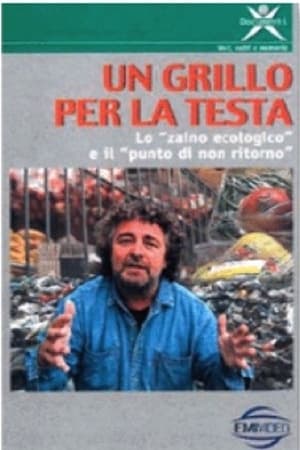

Greenpeace: There's a Rang-Tan in My Bedroom(2018)
Greenpeace brings the rampant destruction of rainforest habitat in Indonesia to grow palm oil into the spotlight.

Movie: Greenpeace: There's a Rang-Tan in My Bedroom

Greenpeace: There's a Rang-Tan in My Bedroom
HomePage
Overview
Greenpeace brings the rampant destruction of rainforest habitat in Indonesia to grow palm oil into the spotlight.
Release Date
2018-08-13
Average
0
Rating:
0.0 startsTagline
Genres
Languages:
Keywords
Similar Movies
 8.0
8.0Beavers: Patagonia invaders(es)
In 1940 twenty Canadian Beavers were brought to 'Tierra del Fuego' island in southern Patagonia for commercial fur production. However, beavers having no natural predators, quickly spread throughout the island, causing massive destruction of trees threatening the entire Patagonian forests rivers and species. Why wildlife conservationist are convinced that 150.000 beavers must be killed? Why some of the most recognized specialist are convinced that an eradication is not possible? Meanwhile truism is capitalizing on the situation: a man dressed as a beaver passes out flyers promoting a famous sky resort: 'Cerro Castor' - Beaver Hill. Hunters claim for subsidies, scientists are researching, rangers do what they can and restaurants tray to offer beaver meat to tourist.
A Ghost In The Making(en)
Everyone has heard about bee declines, but with so much attention focused on domesticated honeybees, someone has to speak up for the 4,000 species of native bees in North America. Natural history photographer Clay Bolt is on a multi-year quest to tell the stories of our native bees, and one elusive species – the Rusty-patched Bumble Bee – has become his white whale. Traveling from state to state in search of the Rusty-patched, he meets the scientists and conservationists working tirelessly to preserve it. Clay’s journey finally brings him to Wisconsin, where he comes face to face with his quarry and discovers an answer to the question that has been nagging him: why save a species?
 6.4
6.4Silent Running(en)
After the entire flora goes extinct, ecologist Lowell maintains a greenhouse aboard a space station for the future with his android companions. However, he rebels after being ordered to destroy the greenhouse in favor of carrying cargo, a decision that puts him at odds with everyone but his mechanical companions.
The Congolese Rainforests: Living on Borrowed Time(fr)
In June 2010, French actress Marion Cotillard spent a week in the heart of the tropical forests of the Democratic Republic of Congo with members of Greenpeace France and Greenpeace Africa. She delivers in video a strong testimony on the looting of Congolese forests which benefits a few industrial groups, often European.
 7.0
7.0Nuclear Now(en)
With unprecedented access to the nuclear industry in France, Russia, and the United States, Nuclear Now explores the possibility for the global community to overcome the challenges of climate change and energy poverty to reach a brighter future through the power of nuclear energy. Beneath our feet, Uranium atoms in the Earth’s crust hold incredibly concentrated energy. Science unlocked this energy in the mid-20th century, first for bombs and then to power submarines. The United States led the effort to generate electricity from this new source. Yet in the mid-20th century as societies began the transition to nuclear power and away from fossil fuels, a long-term PR campaign to scare the public began, funded in part by coal and oil interests.
 0.0
0.0Seabrook 1977(en)
In April 1977, the small coastal town of Seabrook, New Hampshire became an international symbol in the battle over atomic energy. Concerned about the dangers of potential radioactive accidents, over 2,000 members of the Clamshell Alliance, a coalition of environmental groups, attempted to block construction of a nuclear power plant. 1,414 people were arrested in that civil disobedience protest and jailed en masse in National Guard armories for two weeks.
Your Chance to Live: Pollution(en)
A surrealistic look at the future if man does not learn to control pollution.
 0.0
0.0Seagulling(hr)
As societies grapple with the escalating concern of environmental pollution, the imperative for collective consciousness and concerted action becomes ever more pronounced. The impact of human activities on the environment demands heightened awareness and proactive measures. In this context, the utilization of First Person View (FPV) drone technology emerges as a compelling and immersive tool for capturing the essence of our surroundings. The allure of FPV drone footage lies in its ability to provide a unique and genuine perspective of various landscapes, ranging from pristine beaches to meandering valleys and flowing river currents. This immersive visual medium not only serves as a means of documentation but also as a potent catalyst for instigating dialogue and inspiring environmental stewardship.
Abigail(en)
As the gap between a burning airplane and the ground gets smaller, one passenger has other things on his mind!
 7.3
7.3Pitch Black: Slam City(en)
Leading up to the events of Pitch Black, Richard B. Riddick escapes the Ursa Luna Penal Facility with William J. Johns hot on his tail.
 6.3
6.3Piccolo(sh)
Two men in adjoining duplexes, good friends, are enchanted by the song of a bird. One buys a small harmonica and learns to play it; he keeps his neighbor awake. The neighbor buys a larger harmonica, and an arms race ensues; the instruments get larger, until it's a piano vs. a pipe organ, and then they start bringing in larger groups of friends until an entire orchestra is playing the 1812 Overture. The houses collapse from all this, atop the dueling orchestras, and on their way up to heaven, the man puts his small harmonica up for sale.
 0.0
0.0Miriam by the Lake(et)
Miriam goes camping with her family and her chicken, on the lakeside. But a chicken was not made just for swimming and sunbathing. It was made to get in trouble.
 4.2
4.2Pokémon: Partner Up With Pikachu!(en)
Ash and Pikachu face off against Lt. Surge and his Raichu in an electrifying Gym battle, and Pikachu has a tough decision to make about its future. And when our heroes come across a forest filled with other Pikachu, Ash makes a difficult choice of his own. As the journey continues, they meet a unique Pikachu who loves to surf, as well as some Pikachu movie stars who dress up in costumes…and Ash’s Pikachu even gets the chance to star in a couple of films! Finally, Ash and Pikachu visit a strange mirrored world—how will they get back home?






